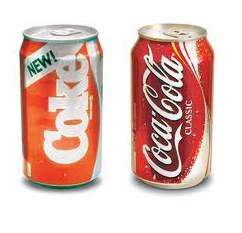Articles and News
HOW TO REBOUND WHEN THINGS GO WRONG | October 31, 2012 (0 comments)

Carlsbad, CA--As a leader, you must always give credit where credit is due, but you must also accept responsibility when things go wrong. There is no single act that gives you more credibility than accepting the failure of those under you as your own—or acknowledging that a decision you made wasn’t the right one. It will score points with those above and below you. Taking a hit for mistakes and problems when things go wrong is hard, but it's the right thing to do, as long as you have a firm understanding of what happened.
Why is accepting responsibility such an important element in leadership? When subordinates know you will back them, they are more inclined to take risks. They will be more innovative in their work. It helps to bring out the best in them. That's what you want. And that's what they want.
Do you remember when Coca-Cola Company introduced "New Coke," effectively throwing out the soft drink so many people loved? That day—April 23, 1985--lives in marketing infamy as one of the colossal blunders in consumer-goods history. But Robert Goizueta, then chairman and CEO of the firm, stepped in and took responsibility for the risky decision—a mistake that could have toppled the iconic brand—and soon repackaged traditional Coke as "Coca-Cola Classic," regaining credibility for the corporation as a whole.
In the early 2000s, while I was president of GIA, nearly 1,000 HPHT-treated diamonds were put through our lab and went undetected. It could have been a major black eye for GIA, but we took ownership of it, admitted it, likened it to a new, previously undetected medical virus that was killing people, and went to work to identify it. With the help of De Beers scientists, GIA’s researchers discovered what was being done to Type IIa brown diamonds to turn them white—and subsequently how to identify treated stones.

Bill Boyajian
The return of the original formula Coca-Cola on July 11, 1985, just 79 days after the previously announced change, stands as a testimony to taking measured corporate risks but also as an example of how leaders act—and react—to challenges their company faces in the heat of a firestorm. Goizueta's willingness to accept responsibility for the introduction of "New Coke" spoke volumes about his leadership and engendered the trust of his staff. Despite the incredible backlash of public sentiment—something that could have cost the chairman his job—his creativity in "rebirthing" Classic Coke built credibility with his people and with consumers.
At GIA, our work to identify HPHT treatment not only prevented consumer confidence in diamonds from being undermined, it reinforced the lab’s reputation as a global leader in gemological research. And Coca-Cola, instead of becoming just another case study of marketing blunder, goes down as one of the best rebounding feats in American business.
Bill Boyajian of Bill Boyajian and Associates, Inc. is the author of Developing the Mind of A Leader, and consults for top firms in the gem and jewelry industry. Read his blog here or contact him at (310) 691-9562, email: bill@billboyajianassociates.com, or log onto www.mindofaleader.com.







